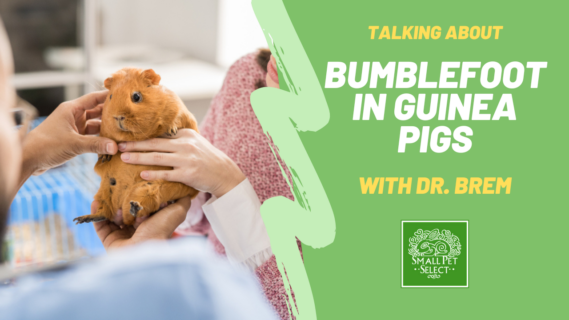Last year I had a patient, Foxy, who had the worst case of bumblefoot I’d ever seen in a guinea pig. When I first saw her shortly after the shelter got her, her back right foot was moderately affected, but regardless of how we treated her (aggressive antibiotics, topical medications, bandaging, better bedding than she previously had), the condition progressed.
Eventually, she developed some fractures in her foot bones due to deep infection and needed to have her leg amputated. Fortunately, most of the time bumblefoot in guinea pigs, aka pododermatitis, doesn’t get to this point! However, it can be a really painful condition in small pets and can be difficult to treat.
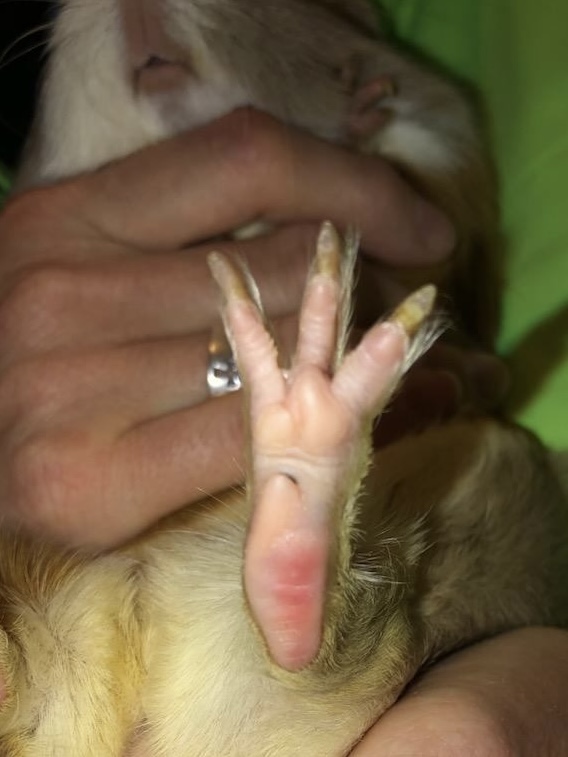
(mild case of bumblefoot):
Sugar the Guinea pig’s mild case of pododermatitis upon intake at the shelter. Her condition is improving thanks to environmental changes. Photographer: Lizzie Simmons. Used with permission.
Causes of Bumblefoot
Guinea pigs are affected by bumblefoot more than other small mammals. The cause is almost always somehow related to caretaking practices, although often owners are unaware that they are doing anything “wrong.”
Guinea pigs and other small pets have thin skin on their feet, with little fat protecting the bones, joints, and tendons. Because of this, their feet are extremely sensitive to a lot of environmental issues:
wire bottomed enclosures
wire wheels cause excess pressure
wood shavings
straw and carpets are abrasive
dirty bedding leads to urine scald and therefore weakened skin
small enclosures mean more sitting around which lead to pressure sores

Also, if a Guinea pig does not get enough vitamin C in its diet, it is prone to arthritis and poor wound healing, and if any small pet is overweight, more pressure is placed on the feet, which aggravates bumblefoot.
Older age is also a factor in increased risk of bumblefoot in guinea pigs, because older guinea pigs tend to not be as active, have decreased immune function, and may have arthritis. Essentially, anything that causes increased pressure or injured skin causes inflammation of the small amount of soft tissue they have in their feet.
Diagnosis of Bumblefoot In Guinea Pigs
In Guinea pigs, bumblefoot can affect both the front and back paws. Owners may first notice redness and excess skin growth. These are signs of inflammation, and if not corrected the feet may become swollen, ulcerated, and infected.
Infection and erosion of the skin and soft tissue can lead to inflammation and infection of the tendons, joints, and bones and sometimes can lead to fractures. Even the first stage of bumblefoot is painful, and a guinea pig or other small pet may not want to move or eat and may vocalize when its foot is touched. Gastrointestinal stasis can occur because of the pain, and infection can occasionally spread to heart disease.
A visit to your veterinarian is definitely recommended if you see any sign of swelling or a sore. A vet can perform a test called a skin impression or skin scrape to see if an abnormal amount of bacteria or yeast is present. This test may also be helpful to make sure the swelling is not a tumor, which bumblefoot can resemble. X-rays may also be necessary to look for bone infections, fractures, or dislocations.
Treatment
In mild cases of bumblefoot, changing the environment may be enough. (See Prevention below.) Since bumblefoot is usually an area of severe inflammation, or cellulitis, instead of an abscess or tumor, there isn’t really anything to drain or remove. In addition, the area bleeds a lot and stitches can’t be placed there because they would just pop out.
Veterinarians use a protocol called wound management.
An initial cleaning with a special disinfectant is performed.
Depending on what the skin scrape results show a specific cream or ointment may be applied.
The foot is bandaged (up the leg quite a way) with padding and an outer wrap in a manner that ensures blood flow is still intact and helps keep the pet from traumatizing the area. The bandaging both allows the wound to heal and provides pressure relief.
A vet should change the bandaging at least every week or two and can monitor progress at that time. At bandage changes, a vet will likely clean the area with sterile saline water.
Other treatments include oral antibiotics, pain medication, and possibly a weight management program, vitamin C supplementation, and environmental changes.
Occasionally, as with Foxy, if there is a deep infection and/or fractures, amputation of the leg is likely necessary. Bumblefoot can take several months to heal, and the foot may remain swollen afterward. It can also happen again, so owners should check their guinea pigs every week.
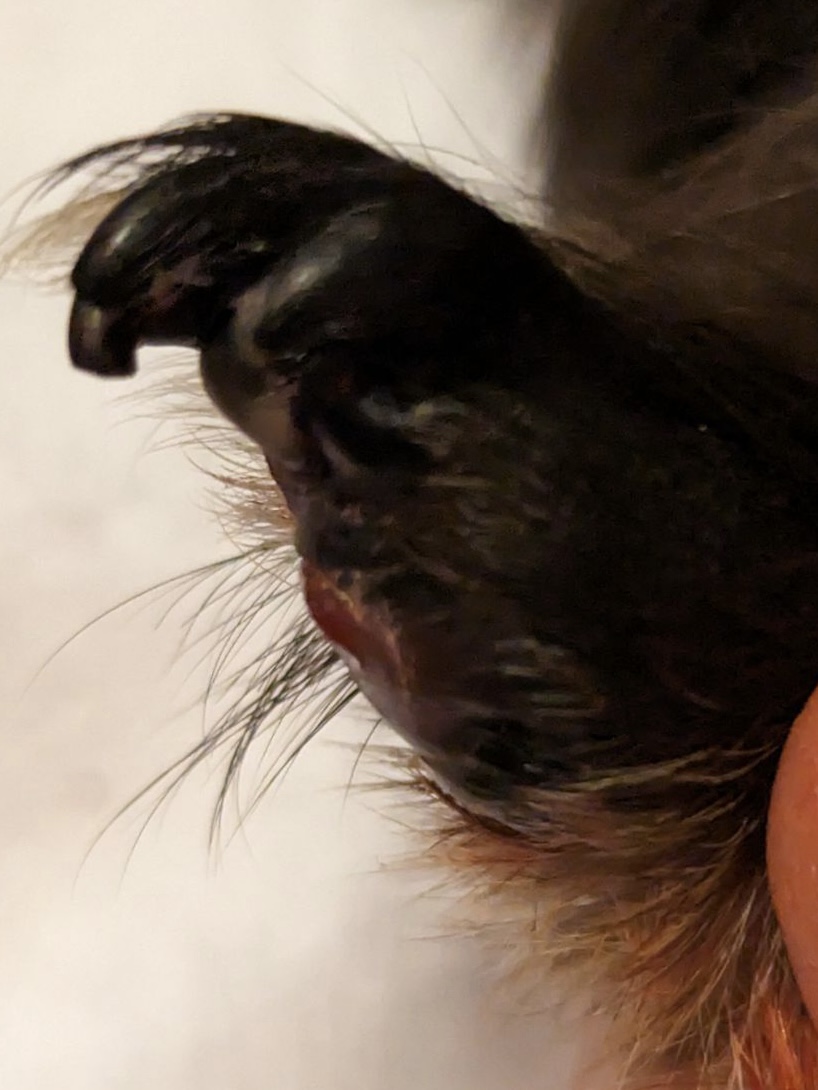
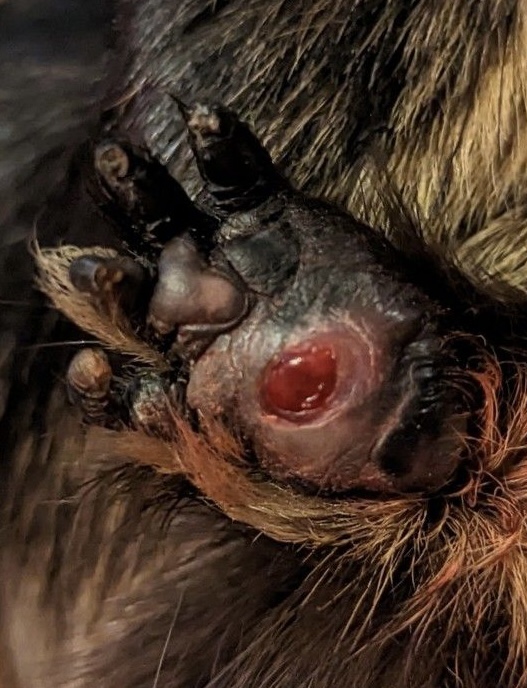
Foxy the Guinea pig’s ulcerated pododermatitis. She needed amputation of her back right leg when aggressive treatment did not work. Photographer: Amy “Brem” Bremers.
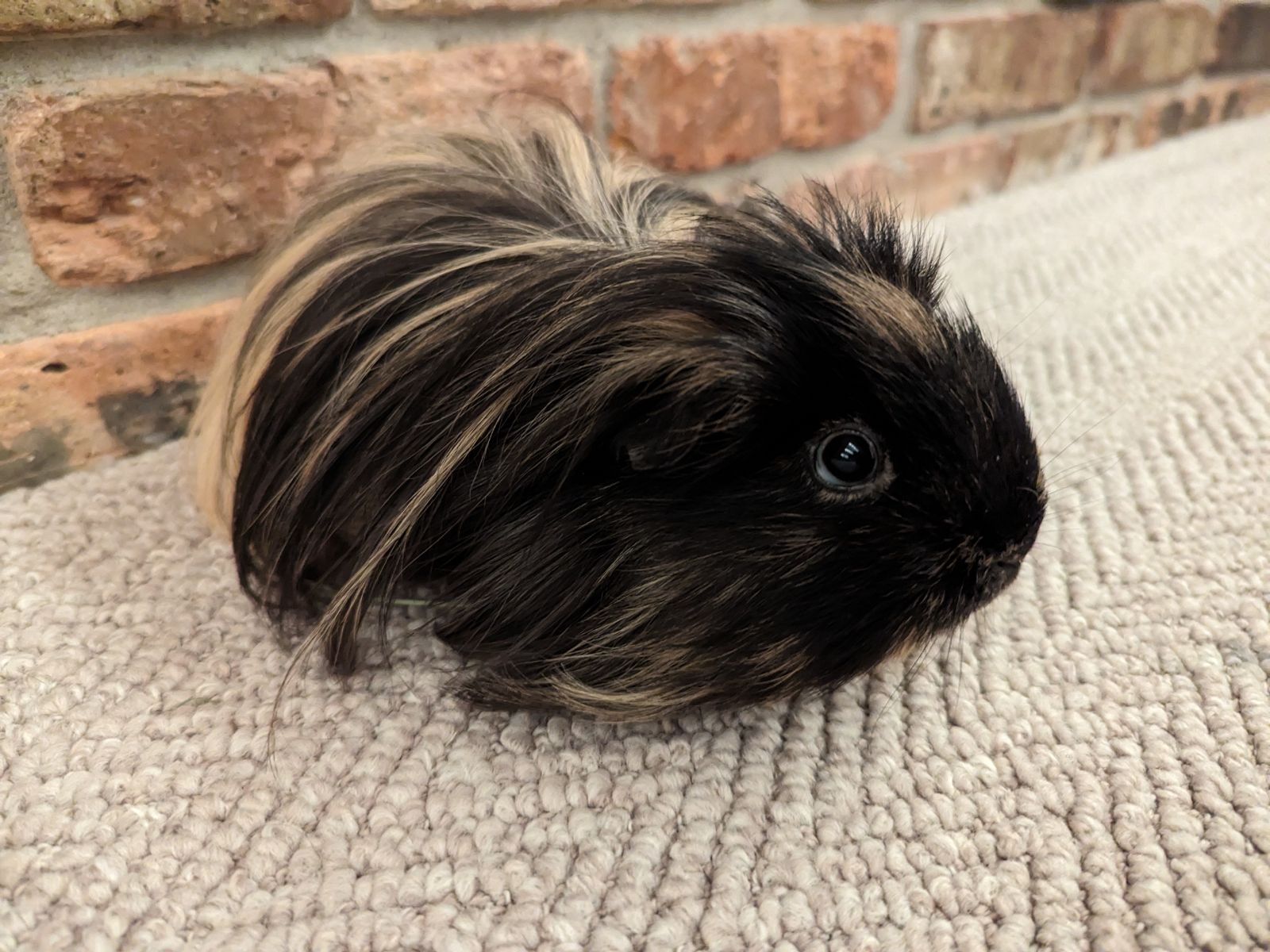
Foxy is fine now post-amputation. Photographer: Laura Beckman. Used with permission.
Prevention of Bumblefoot in Guinea Pigs
The best way to “treat” bumblefoot is to keep it from happening in the first place. Enclosures should have a solid surface instead of wire and should have abundant soft bedding such as recycled paper products, fleece blankets, towels, and pads instead of wood chips or straw.
Thick foam rubber mats are also nice because they have a lot of give that decreases pressure on sensitive feet. Enclosures and bedding should be kept clean as well.
Bumblefoot in guinea pigs is not contagious, since the usual bacterium that is found is one that is normal to be found on the skin. However, if guinea pigs share an environment, it is possible that multiple pigs will have bumblefoot.
As with many conditions, a proper diet is important to prevent obesity and ensure pets get adequate nutrition. For Guinea pigs, unlimited hay, a limited amount of pellets, and foods that contain high vitamin C levels such as spinach, broccoli, kale, parsley, and sweet bell pepper are appropriate. Treats should be very limited. Environmental enrichment can help increase activity.
Not just Guinea Pigs
Guinea pigs aren’t the only pets who are affected by bumblefoot. Rabbits are prone to it since they don’t have footpads, only fur, on their back feet. Chinchillas and hamsters, rats, and other small rodents also tend to be affected, since they often have the same environmental issues as guinea pigs do.
Birds and backyard chickens are also affected. As with Guinea pigs, inappropriate and/or soiled bedding/flooring can lead to bumblefoot. Wet litter sticks to their feet and can cause infected skin, which can then lead to deeper infection.
Injury to a wing or leg such as from frostbite or burn, an overgrown talon, or a bite wound, arthritis, a neurologic condition, and heart disease can also mean increased risk for bumblefoot. In addition, injury to one leg can lead to bumblefoot in the other foot because the bird leans away from the injured leg and puts more pressure on the uninjured side.
Diagnosis, treatment, and prevention are similar for other pets as they are for guinea pigs except that with birds, daily Epsom salt or povidone-iodine foot soaks may be used instead of antibiotics.
Copyright 2024 Amy “Brem” Bremers, DVM



